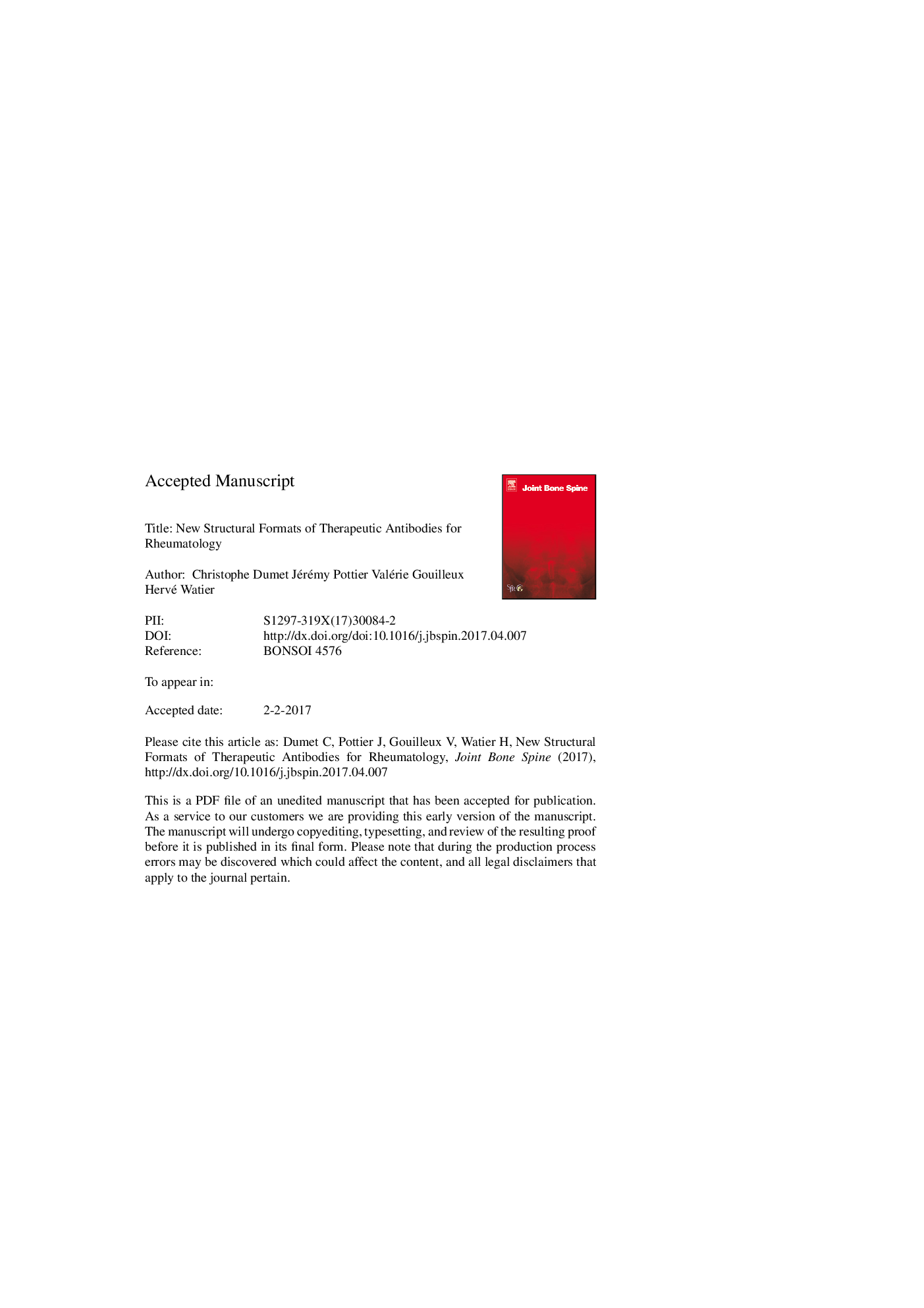| Article ID | Journal | Published Year | Pages | File Type |
|---|---|---|---|---|
| 8739376 | Joint Bone Spine | 2018 | 27 Pages |
Abstract
Pharmaceutical companies strive continuously to develop better medications in order to remain competitive. In the arena of monoclonal antibodies and related biologics (fusion proteins containing an IgG Fc fragment), the thrust is not only toward identifying new targets, but also toward developing new molecular formats. Here, new-generation antibodies used to treat rheumatic diseases are discussed, with emphasis on relations linking structure to pharmacological effects and on the improvements expected from the new formats. Isotypic and allotypic antibody diversity has pharmacological implications and is already exploited in commercially available antibodies. Efforts to engineer the Fc fragment of the various immunoglobulin G subclasses are reviewed with reference to abatacept, ixekizumab, other mutated IgG4 antibodies currently in development, sapelizumab, anifrolumab, and tanezumab. Bispecific antibodies are a focus of increasing interest (particularly those binding to both IL-17 and TNFα) and may earn a place in the therapeutic armamentarium as a means of avoiding the use of antibody combinations. However, the construction and production of bispecific antibodies continues to raise major technological challenges. Other molecular formats involve the fusion of antibodies to cytokines or the use of nanobodies and peptibodies. These new formats are at the very early stages of development, and their clinical relevance remains unclear.
Related Topics
Health Sciences
Medicine and Dentistry
Immunology, Allergology and Rheumatology
Authors
Christophe Dumet, Jérémy Pottier, Valérie Gouilleux, Hervé Watier,
